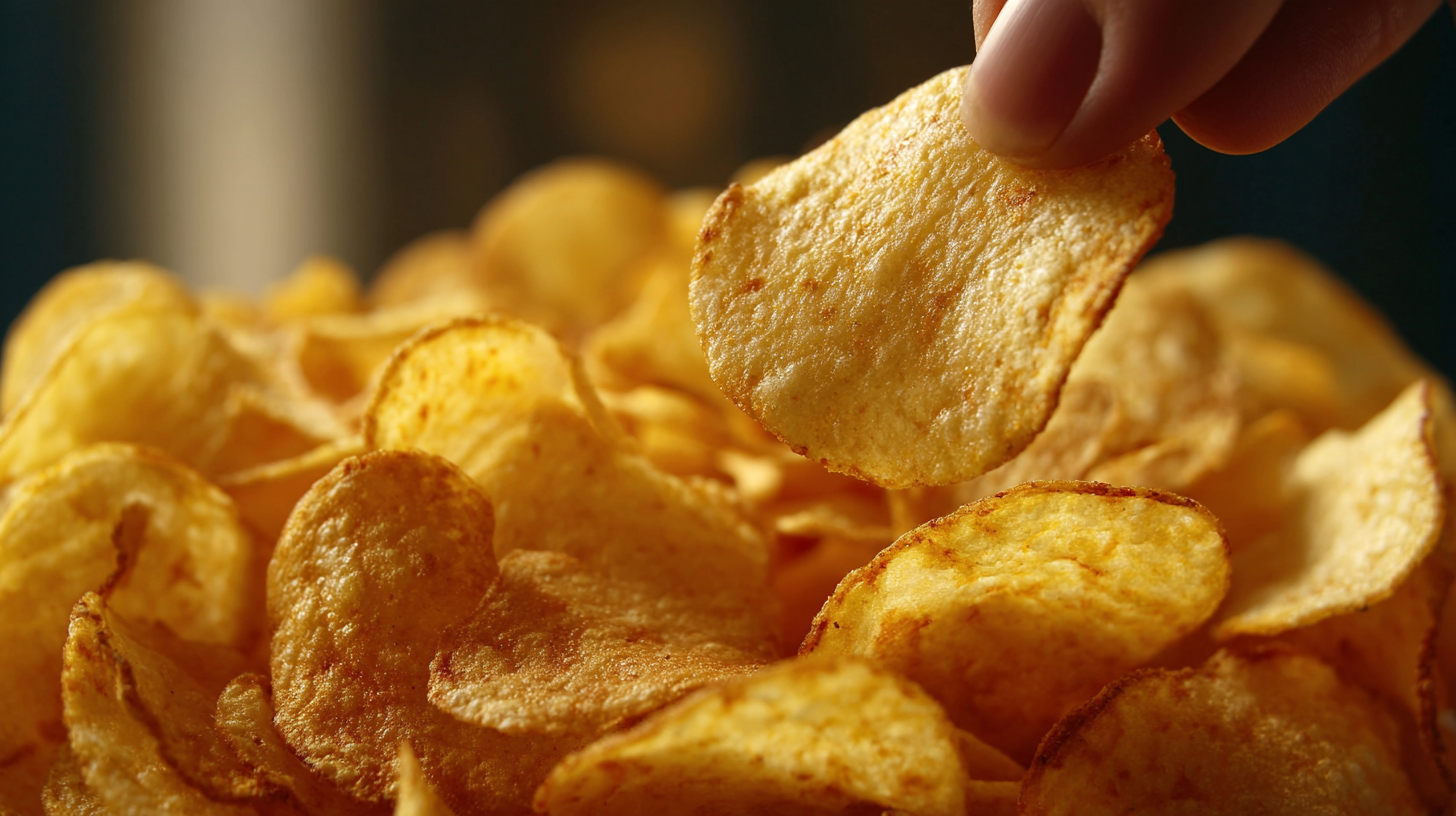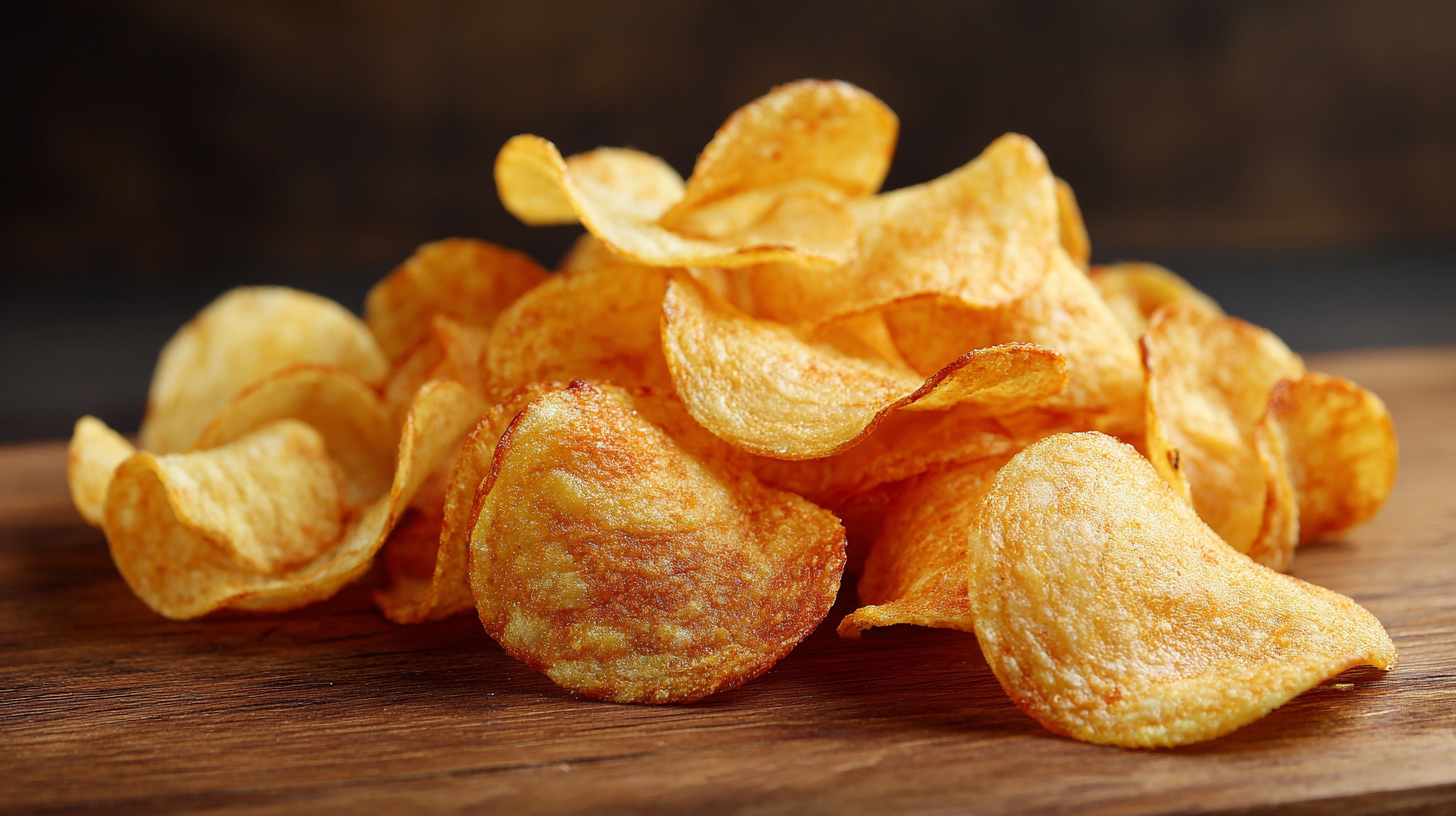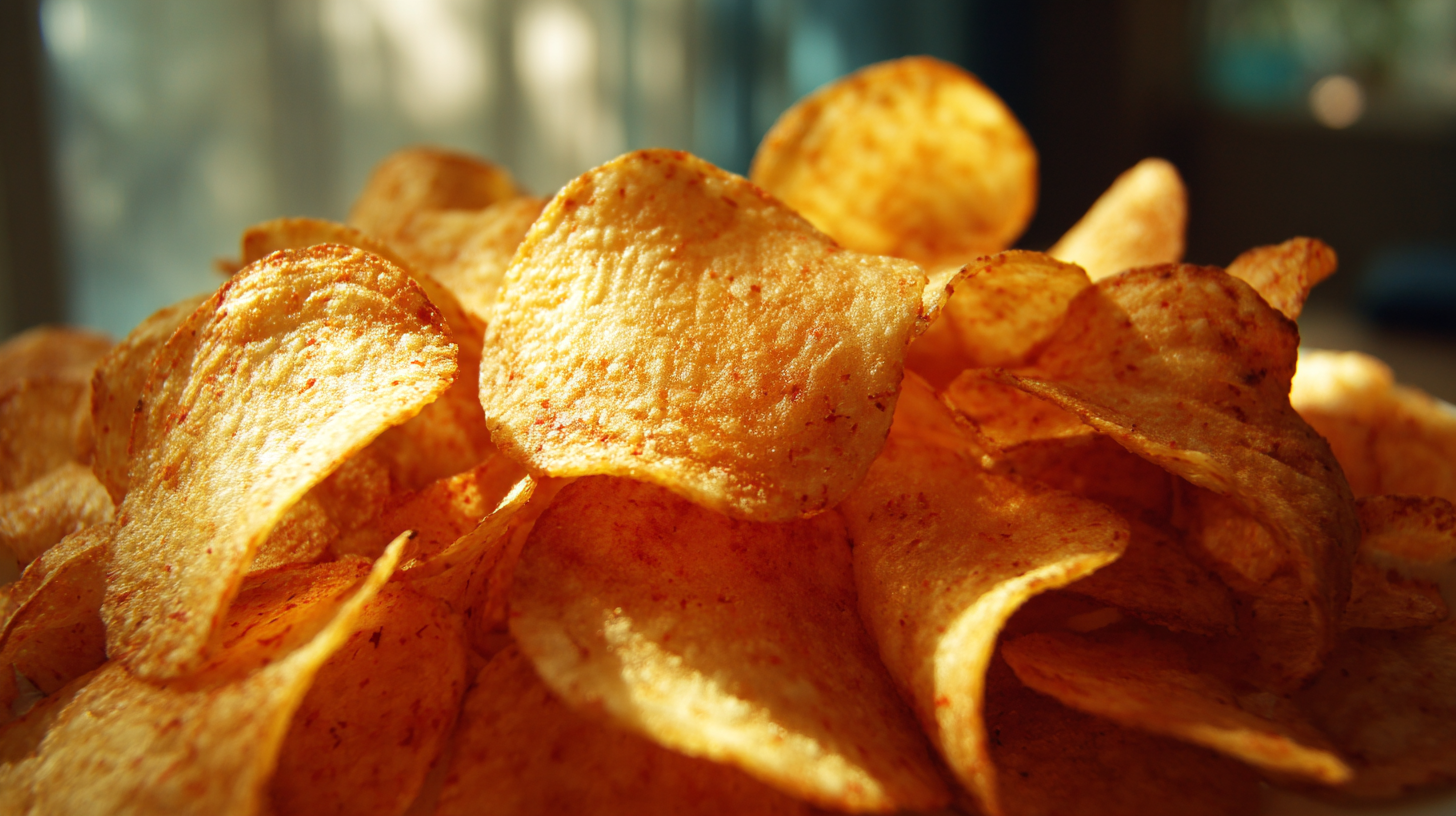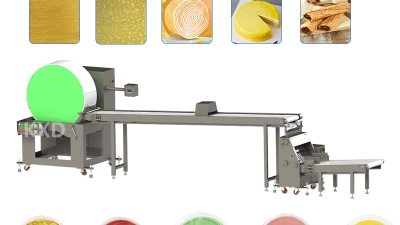Challenges Faced when Using a Potato Chips Maker at Home
Table of Contents
- Common Technical Issues with Home Potato Chips Makers
- Ingredient Selection: Finding the Right Potatoes for Chips
- Maintaining Consistent Cooking Temperatures for Perfect Chips
- Cleaning and Maintenance Challenges After Making Chips
- Experimenting with Flavors: Overcoming Seasoning Limitations
- Dealing with Oil Usage and Health Concerns in Homemade Chips
- Perfecting Your Crepe Craft: How the Commercial Automatic Electric Gas Crepe Maker Revolutionizes Crepe Making
- FAQS
- Conclusion
- Related Posts
Lately, homemade snacks have really been gaining popularity. I mean, did you know that the global potato chip market is expected to hit around $38.5 billion by 2025? That’s pretty impressive! Because of all this buzz, lots of food lovers are now investing in their own Potato Chips Makers, wanting to whip up crispy, tasty chips right from their own kitchens.

But, honestly, even with all the excitement, making perfect homemade chips isn’t always smooth sailing. Folks can run into problems like uneven cooking or ending up with machine troubles now and then. At Shandong Kexinde Machinery Technology Co., Ltd., we totally get how tricky food machinery can be. Our goal is to help solve these issues by offering top-notch equipment and support for everyone in the food biz.
So, in this guide, I’ll walk you through some of the common hurdles people face when using a Potato Chips Maker at home—and share some easy, practical tips to help you get the best results possible.
Common Technical Issues with Home Potato Chips Makers
If you've ever tried making potato chips at home with a machine, you probably know there are a few common hiccups that can make the whole process pretty frustrating. One big issue folks often run into is uneven cooking—sometimes, the chips turn out perfectly crispy, and other times, they’re undercooked or even burnt. It’s kind of annoying, right? Especially when you're aiming for that ideal batch.
Then, there's the problem of clogging up the slicing mechanism. If the potatoes are too wet or not prepped properly, they can get stuck, and the machine might jam up on you. Cleaning the gadget after each use is really important but, let’s be honest, it can be a total chore and take up some time. And don’t forget the occasional power issues—sometimes the machine doesn’t heat up right or it’ll just shut off on its own. Knowing these common problems can actually help you troubleshoot faster and make your homemade chip adventures way smoother.
Challenges Faced When Using a Potato Chips Maker at Home
This bar chart represents the common technical issues faced by users of home potato chips makers. The data shows the frequency of issues encountered, with "Inconsistent Cooking" being the most prevalent challenge.
Ingredient Selection: Finding the Right Potatoes for Chips
Making potato chips at home? Honestly, the key stuff is choosing the right ingredients. Seriously, the kind of potatoes you pick really affects how your chips turn out — stuff like texture and flavor. Did you know that different potatoes have different starch levels? That’s a big deal when it comes to how crispy your chips will get once you fry ’em up. For example, Russet potatoes, with their high starch content, are pretty much a go-to for homemade chips. They’re fluffy inside but still get that nice crunch — perfect!
And speaking of flavors, things are getting pretty exciting out there. More and more people are trying out wild new tastes — think sour flavors like plum or onion sour cream. It’s all about mixing things up and making your homemade chips stand out. So, if you pick the right potatoes and get creative with the flavors, you can totally elevate your snack game. Honestly, playing around with these ideas can really help you get the most out of using a potato chip maker and make your snacking way more fun and tasty.
Maintaining Consistent Cooking Temperatures for Perfect Chips
 Trying to make homemade potato chips with a chip maker at home can be pretty fun, but honestly, it’s not without its fair share of challenges. One of the trickiest parts is keeping the temperature just right — that perfect, steady heat that gets you those crisp chips. Sometimes, it takes ages for the machine to heat up to where you want it, and that can be a real pain. Plus, if the heat’s not evenly distributed, you end up with some chips that are overcooked and others that are underdone — not exactly ideal.
Trying to make homemade potato chips with a chip maker at home can be pretty fun, but honestly, it’s not without its fair share of challenges. One of the trickiest parts is keeping the temperature just right — that perfect, steady heat that gets you those crisp chips. Sometimes, it takes ages for the machine to heat up to where you want it, and that can be a real pain. Plus, if the heat’s not evenly distributed, you end up with some chips that are overcooked and others that are underdone — not exactly ideal.
To get around this, it’s a good idea to keep an eye on the temperature. Throwing in a cheap external thermometer can be a game-changer — it helps you make sure the oil stays at a steady temp while frying. Also, don’t go overboard with too many potatoes at once. Doing smaller batches gives the oil a chance to bounce back faster after each round, making everything cook more evenly. With a little patience and some extra attention to heat, you'll be surprised how much better your homemade chips turn out — crispy, golden, and just how you like them!
Cleaning and Maintenance Challenges After Making Chips
Cleaning and taking care of a potato chips maker at home can actually be kinda tricky. I mean, after you've just had some delicious, freshly made chips, nobody really wants to spend ages cleaning the thing, right? Most home models need you to take them apart pretty thoroughly to get them clean, which can really take some time. Plus, if you don't clean it properly, oil and leftover bits can build up. That can mess with the taste of your chips next time and also isn’t great for keeping the machine hygienic. Honestly, it can affect the quality of your chips and even cause the machine to wear out faster.
And then there's the other part — making sure everything's working okay after cleaning. Some of the parts might need special cleaning stuff or techniques that aren't exactly obvious for most of us. Studies show that nearly 30% of folks using home food machines run into issues mainly because they don’t clean or maintain their equipment properly. That’s why it’s super important to know the right cleaning methods, especially for higher-end gadgets like the ones from Shandong Kexinde Machinery Technology Co., Ltd. With their experience in food equipment, they’re actually pretty key in helping consumers learn how to care for their machines so they last longer and work better.
Experimenting with Flavors: Overcoming Seasoning Limitations
Trying out different flavors is honestly one of the coolest parts of making your own potato chips at home. But let’s be real—sometimes, seasoning options can feel pretty limited, which can put a damper on your creative mojo. I read a report from the Snack Food Association that said a whopping 70% of folks are eager to try new, bold flavors—so, clearly, there’s a big market for that kind of experimentation. That’s both exciting and a little challenging for anyone trying to recreate that variety in their own kitchen.

If you want to break free from those seasoning boundaries, one good trick is to get creative with unusual spices and flavor combos. Instead of just sticking to the usual salt and vinegar or BBQ, why not spice things up with something like za'atar or smoked paprika? Mixing sweet and spicy flavors can also give your chips a totally unique twist. Interestingly, about 60% of snack lovers say they enjoy sweet-and-savory combos, so exploring those kinds of mixes is a solid way to keep things interesting and match what people are craving.
Pro tip: Try making a small batch first to test out your new flavor ideas—you know, just to see how they turn out—before doing a big cook. That way, you can tweak things without wasting ingredients. Oh, and another tip: marinate your sliced potatoes in your chosen seasonings for a couple of hours before frying—that helps the flavors really seep in and makes your chips even more awesome.
Dealing with Oil Usage and Health Concerns in Homemade Chips
Making homemade potato chips can be such a tasty treat, but let’s be honest — there are some concerns when it comes to oil and health that we can’t ignore. When you’re deep-frying, it’s good to keep in mind that regular frying oils tend to pack in lots of calories and not-so-great fats. According to the CDC, a single serving of fried chips can have over 300 calories and more than 20 grams of fat — yikes! That’s definitely something to think about if you’re watching what you eat or dealing with health issues like obesity or heart problems.
And, honestly, the type of oil you choose really makes a difference. Experts suggest using oils with a high smoke point and healthier fats — stuff like avocado or olive oil. Not only do they boost the flavor, but they’re better for you too. Some research in the Journal of Nutrition even points out that including healthy fats can help counteract some of the downsides of fried foods. Still, it’s all about moderation — knowing your portion sizes and not going overboard is super important if you want to enjoy your homemade snacks without totally throwing your diet off track.
Challenges Faced when Using a Potato Chips Maker at Home - Dealing with Oil Usage and Health Concerns in Homemade Chips
| Challenge | Description | Impact | Possible Solutions |
|---|---|---|---|
| Oil Usage | Excessive oil can lead to unhealthy chip preparation. | Increases calorie content and health risks. | Use spray oil or explore air-frying options. |
| Health Concerns | Homemade chips can still contain harmful fats. | Potential for increased cholesterol and health issues. | Choose healthier oils like olive or avocado oil. |
| Consistency in Quality | Difficult to achieve uniform cooking and crispiness. | Inconsistent taste and texture in chips. | Experiment with cooking times and slices thickness. |
| Employee Time | Time-consuming preparation and frying processes. | May discourage frequent use of the chip maker. | Batch preparation and using faster cooking methods. |
Perfecting Your Crepe Craft: How the Commercial Automatic Electric Gas Crepe Maker Revolutionizes Crepe Making
Crepes have long been a beloved culinary choice, renowned for their versatility and ability to be paired with a wide array of fillings, ranging from sweet to savory. In the fast-paced world of commercial kitchens, the efficiency and precision provided by the latest technology can make all the difference. The introduction of the commercial automatic electric gas crepe maker marks a transformative moment in crepe creation. This high-performance appliance is engineered to deliver consistently thin and evenly cooked crepes, a feature highlighted in various industry reports highlighting the increasing demand for quality and efficiency in food preparation.
According to a recent report by IBISWorld, the food service equipment manufacturing industry is projected to grow substantially in the next five years. This surge reflects a growing reliance on specialized equipment that helps establishments optimize their operations while delivering high-quality food. The commercial crepe maker is at the forefront of this trend, allowing chefs to create delicious crepes with minimal effort and maximal output. Not only does it enhance the culinary experience for the customer, but it also streamlines preparation times, catering to the bustling demands of restaurants and food trucks alike.
Furthermore, the versatility of a commercial crepe maker can help establishments expand their menus and increase customer satisfaction. With this appliance, chefs can experiment with diverse recipes and cater to various dietary preferences, ensuring that their offerings remain competitive. By seamlessly integrating technology into the crepe-making process, businesses can focus on what truly matters—delivering a delightful dining experience while keeping operational costs manageable. Investing in such state-of-the-art equipment positions restaurants to thrive in an increasingly competitive market.
FAQS
: Russet potatoes are often recommended for homemade chips due to their high starch level, which allows for a fluffy interior and nice crisping when fried.
Different potato types have varying starch content, which significantly impacts the texture and crunchiness of the chips when fried.
Recent trends indicate a growing interest in diverse flavors, such as sour flavors, including options like plum and onion & sour cream.
Homemade potato chips can contain high calories and unhealthy fats, with a single serving potentially having over 300 calories and more than 20 grams of fat.
Oils with a high smoke point and healthy fat composition, such as avocado or olive oil, are recommended as they enhance flavor and provide better nutritional benefits.
Incorporating healthy fats can mitigate some negative impacts of fried foods, making them a better option than using oils high in unhealthy fats.
Even with healthier oils, moderation is key to maintaining a balanced diet and being mindful of portion sizes is crucial to enjoy homemade snacks without overindulging.
Ingredient selection, particularly the choice of potato variety, plays a pivotal role in achieving the perfect crunch and flavor in potato chips.
Conclusion
Making potato chips at home with a chips maker can be pretty fun, but I won’t lie — it’s got its share of little headaches too. For instance, you might run into stuff like uneven heating or parts acting up, which can throw off your frying game. Picking the right potatoes really matters, too — some types give you that perfect crunch and flavor, while others fall flat. And don’t forget, keeping the temp steady is key if you want those chips to turn out just right — crispy on the outside, tender inside.
Cleaning up afterward can be a bit of a hassle, especially with all the greasy residues clinging to everything. Trying out different seasonings? That can be tricky sometimes, ’cause not all spices stick well, which impacts how your chips taste. Plus, you gotta be mindful of how much oil you’re using — not just for the crunch but also for health reasons. The folks at Shandong Kexinde Machinery understand these struggles—they’re always working on making things easier and better for people like us who love making chips at home.
Related Posts
-

Maximize Your Investment with Exceptional After Sales Support for Best Crisp Chips Making Machine
-

Achieving Industry Standards in Potato Chips Production How to Choose the Best Making Equipment
-

Unlocking Efficiency in Warehousing with the Best Automatic Pallet Washing Machine Insights and Strategies
-

Leading the Way in Export Strength: The Best Chicken Basket Washing Machine from China
-

Navigating Industry Standards and Challenges for the Best Automatic Breading Machine
-

Unmatched Onion Ring Breading Machines from Leading Chinese Manufacturers for Global Excellence


